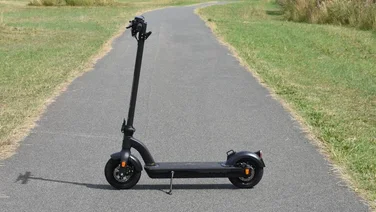To help us provide you with free impartial advice, we may earn a commission if you buy through links on our site. Learn more





The Vestax Pad-One is a USB-powered MIDI controller that lets you control DJing and music production software with 12 velocity and pressure-sensitive pads, an X/Y pad and a collection of buttons and dials. You can use it to play drum sounds in your digital audio workstation, trigger hot-cues in your DJing software or whatever else you decide to do with it.

The Pad-One is incredibly versatile and you can edit each pad so that it emits a specific MIDI control signal or note, and it has four separate banks of controls, giving you up to 48 different MIDI controls. If you want to assign a bass drum sound to the first pad, for example, and your software won’t let you do that because it demands a specific MIDI signal, you can edit the pad’s MIDI signal using the Pad-One hardware so that it emits that specific note. You really can customise the Pad-One’s hardware to organise your controls exactly the way you want them.
Unlike many compact MIDI controllers, the Pad-One has a solid aluminium casing and is extremely tough. The pads are constructed from durable silicon and the pots and other controls are also well built. The Pad-One is designed to be used, abused and taken to gigs, so you can be sure it’ll survive the rigours of your home studio for many years.

Although the Pad-One has a power connector for an external power supply, it doesn’t actually come with one; it must be bought separately. For most people, that’ll be no great hardship because the Pad-One is USB-powered, although you might encounter problems if you connect it to a non-powered USB hub. If the hub can’t deliver enough power to the Pad-One it won’t work. If you plug the Pad-One in to your computer directly, and most users will, you’ll be fine.
The Pad-One also has a MIDI output that lets you control older MIDI equipment. You need to use a 6-pin to 5-pin DIN MIDI convertor cable, but that comes with the unit, so you can incorporate it in to older setups straight away.
DRUMMER GETS WICKED
Each drum pad is Large enough to hit easily and has a lot of resistance, but they’re soft enough to cushion your stabs and not fatigue your fingers when playing for extended periods. You can just hit the pads as you wish, but the Pad-One also has a number other features that let you get creative without having to change software settings constantly.
One example is the Pad-One’s Hold and Roll features which repeat a pad’s note every beat. Simply engage the Hold and Roll buttons and press a pad to have its note repeated. You must set the tempo using the tap button. This isn’t an exact way of setting a specific BPM, but it’s a good way to generate a groove quickly and it makes the experience more natural and human. The Hold and Roll features make it easy to tap in regular instruments, such as bass drums, hats and tambourines. All pads are illuminated green by default and turn orange when you hit them or when they’re selected in Roll mode. This means you can easily see which pad is repeating.

The Roll feature can also be used in conjunction with the Pad-One’s X/Y pad to create some funky drum-rolls. The X-axis controls the speed of the drum-roll, with the far-left of the pad triggering a one-beat drum roll, so you play a drum sound on each beat. Swipe your finger to the X/Y pad’s far right and you get machine-gun-quick drum-rolls. The Y-axis controls volume. If you touch the bottom of the pad you can hardly hear the drum roll, but swiping your finger to the top increases it.
IN THE EDIT
A major feature of the Pad-One is the ability to edit the velocity, MIDI control code and note of each pad. This makes it highly configurable. As an example, suppose you’re using Ableton Live and you want to have your bass and snare drums assigned to adjacent pads for your own playing comfort. The Pad-One lets you do this.
To set velocity, MIDI note and MIDI control data for a pad, you press Select to choose which of the three you want to change. Then you press the Edit button followed by the pad you want to change. You then twist the rotary encoder until you reach the MIDI code you want to assign to the pad. Press the Edit button again and it’s set. A neat editing feature is the ability to play the note you’ve selected before you commit it to the pad, so you can be sure you’ve chosen the correct setting.

MODULAR CONTROL
We also tested the Pad-One with Traktor and proved incredibly useful. We mapped it so that we could set loops, change the size of loops and set loops of specific sizes using the pads. As an example, we had a specific pad for setting a 1/8th-beat loop, another for ¼-beat loop and so on. This meant we could quickly set stutter loops for effect when needed.
With four different banks at your disposal, the Pad-One makes a great modular controller for Traktor Pro 2.5, and its excellent build quality means you can take it to gigs with you without worrying about it breaking mid-set.
We really like the Pad-One. It’s an incredibly versatile unit, letting us create beats in our music production software one minute and trigger hot-cues in DJing software the next. The ability to assign specific MIDI codes to specific pads increases that versatility. If you need an easy to configure modular controller, check out the Pad-One.
| Details | |
|---|---|
| Price | £99 |
| Rating | ***** |






